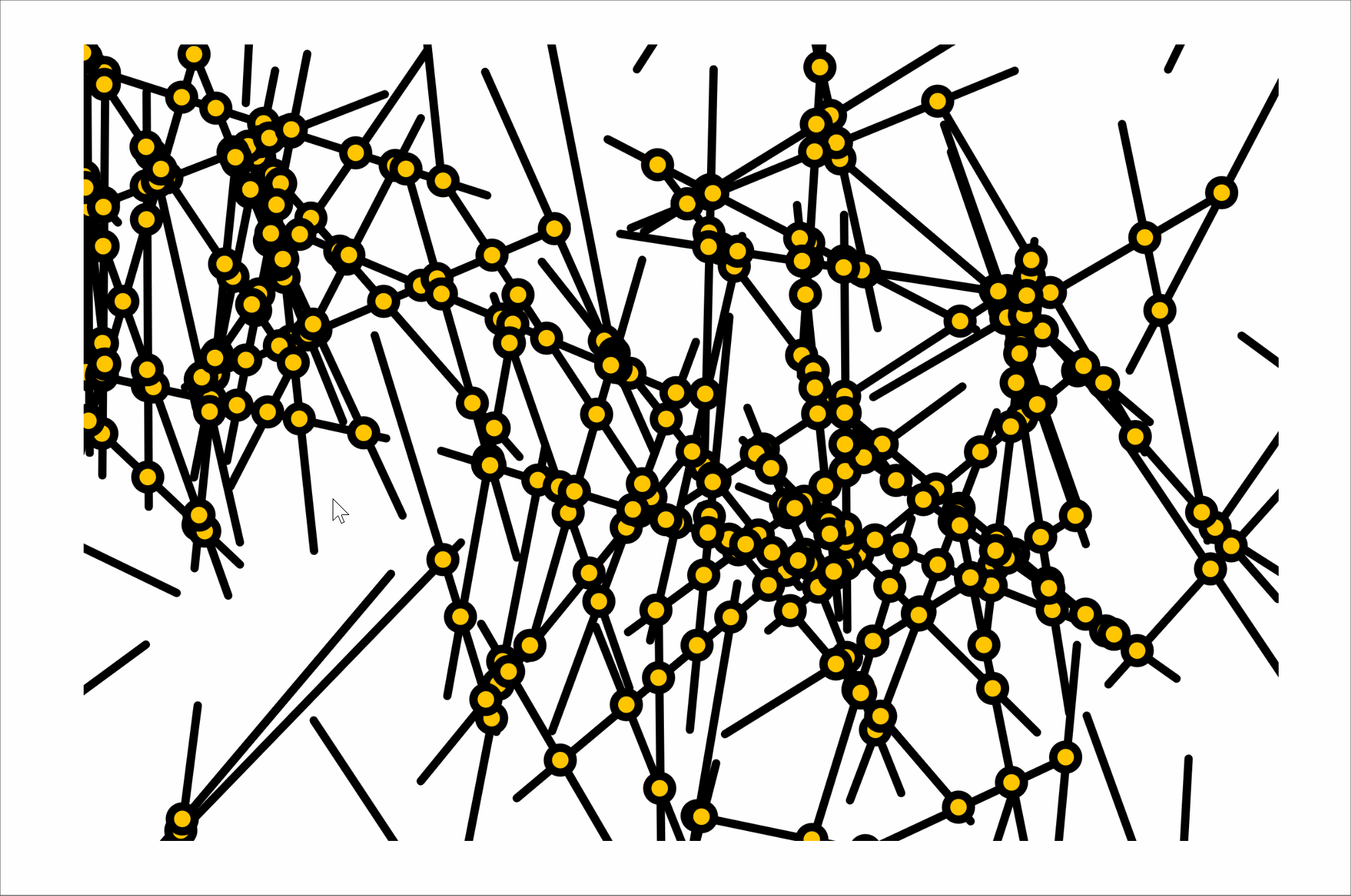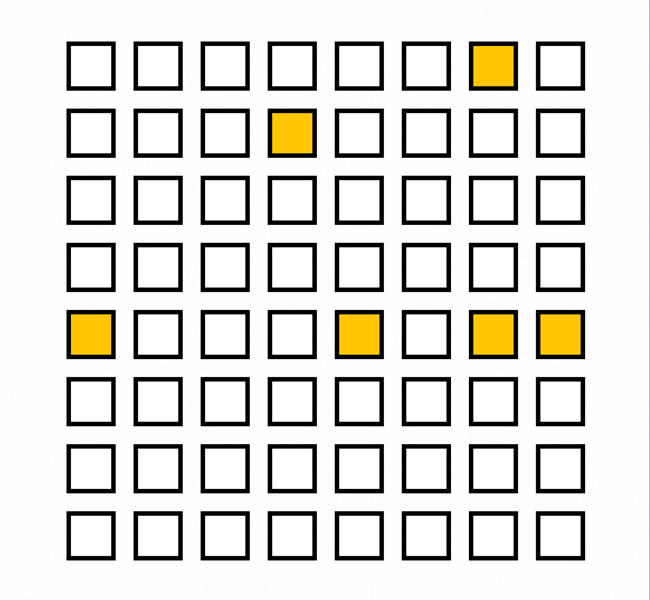
1 2 3 4 5 6 7 8 9 10 11 12 13 14 15 16 17 18 19 20 21 22 23 24 25 26 27 28 29 30 31 32 33 34 35 36 37 38 39 40 41 42 43 44 45 46 47 48 49 50 51 52 53 54 55 56 57 58 59 60 | var boolDoRefresh; const CANV_HEIGHT = 720; const CANV_WIDTH = 720; const H_MARGIN = CANV_WIDTH / 14; const V_MARGIN = CANV_HEIGHT / 14; const V_NUM_LINES = 56; const H_NUM_LINES = 56; const H_UNIT_SIZE = (CANV_WIDTH - (H_MARGIN * 2)) / H_NUM_LINES; const V_UNIT_SIZE = (CANV_HEIGHT - (V_MARGIN * 2)) / V_NUM_LINES; const LINE_LENGTH = H_UNIT_SIZE * 2; const HORIZONTAL_FREQ = 0.25; function setup() { createCanvas(720, 720); background('#EEEEEE'); strokeWeight(0.75); boolDoRefresh = true; } function draw() { if(boolDoRefresh) { background('#EEEEEE'); constructLines(); boolDoRefresh = false; } } function mousePressed() { boolDoRefresh = true; } function constructLines() { var angleOff = random(0.2); var gapX = random(0.5); var gapY = random(0.5); var gapScale = 0.15; noiseSeed(random(100)); var horizontal = random(1); for(var i = 0; i < H_NUM_LINES; i++) { for(var j = 0; j < V_NUM_LINES; j++) { angleOff += 0.1; gapX += i * gapScale; gapY += j * gapScale; if(noise((i * gapScale), (j * gapScale)) > 0.25) { var angle = random(noise(angleOff) * 90); centerLine(H_MARGIN + i * H_UNIT_SIZE, V_MARGIN + j * V_UNIT_SIZE, LINE_LENGTH, angle, horizontal); } } } } function centerLine(x, y, length, angle, horizontal) { angleMode(DEGREES); var randNum = random(2); var x1 = x + ((length / 2) * (horizontal < HORIZONTAL_FREQ ? cos(angle) : sin(angle))); var y1 = y + ((length / 2) * (horizontal < HORIZONTAL_FREQ ? sin(angle) : cos(angle)) * (randNum > 1 ? 1 : -1)); var x2 = x - ((length / 2) * (horizontal < HORIZONTAL_FREQ ? cos(angle) : sin(angle))); var y2 = y + ((length / 2) * (horizontal < HORIZONTAL_FREQ ? sin(angle) : cos(angle)) * (randNum > 1 ? -1 : 1)); line(x1, y1, x2, y2); } |
Process/Reflection:
I dedicated a significant amount of my work on this project to my observations of Vera Molnár's Interruptions. I noted the following:
- In each composition, all the lines are the same length.
- Each line's center falls into a 56x56 grid.
- Each line's length is twice the distance of the spacing on the grid (in other words, the endpoints of a fully vertical or horizontal line will intersect with the centerpoints of the lines immediately next to it)
- While the lines' angles are random, they tend to point in a vertical direction on three of Molnár's compositions and in a horizontal direction on one composition
- Not every line is present. There are gaps in each composition. While the location of the gaps seem random, missing lines tend to exist near other missing lines.
- Gaps appear fairly infrequently
- There is some slight variation in the background color, ranging from off-white to a mid-light grey.
- There is a margin around each composition. Not all of the compositions are centered, but the most centered composition leaves a margin of about 1/14th of the page around the composition.
As I was creating my own compositions in Javascript, I noticed that there was a considerable amount of care needed to produce a convincing randomness. I Perlin noise to create the gaps and the variation in line angles, something that did not exist in the time when the original compositions were created, to make a composition that was close to Molnár's. I think I was only mildly successful, though, as while the lines seem to have a similar character to the originals, the gaps do not. Their borders are too harsh and they are not quite the right shape. I think my line weight is a little off, as well.
Reproducing randomness is incredibly challenging without knowledge of the calculations that led to Molnár's compositions, and I now have a much greater appreciation for the work that goes into producing art with randomness as a factor.


